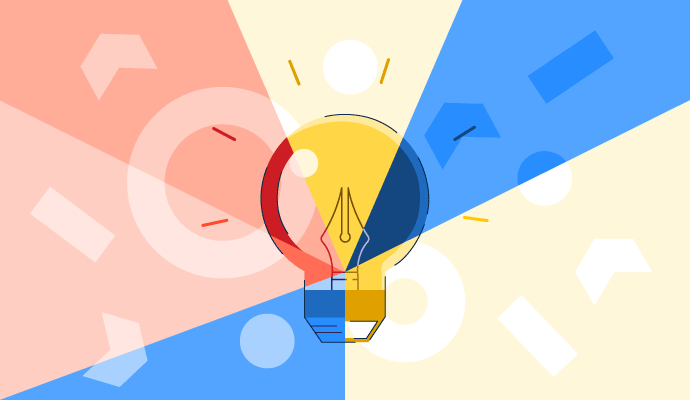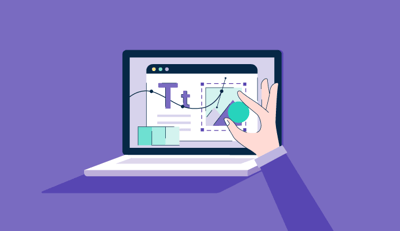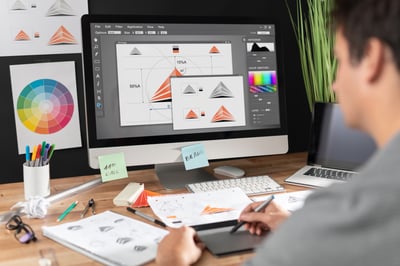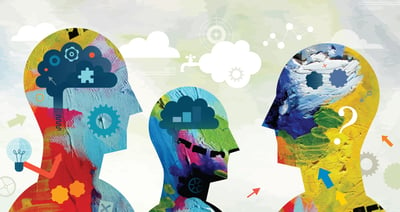
Graphic design is the art of visually communicating ideas to inform, engage, or persuade an audience. Whether it’s a billboard, a brand logo, or a social media post, graphic design shapes how we interact with the world.
When I first entered my Design 101 class, I thought I’d breeze through the basics—colors, typography, Photoshop shortcuts.
I wanted to bypass the boring lessons on colors, shapes, and easy Adobe Photoshop and graphic design software tutorials that were ahead of me and jump right into the nitty gritty of the advanced graphic design process.
I was wrong. Graphic design is a deep, strategic craft that blends aesthetics with psychology and function with flair.
Graphic design is the practice of combining text, images, and visual elements to communicate ideas and information. Designers use typography, layout, color, and imagery to create visual content for print, digital, and interactive media. Common uses include branding, advertising, packaging, and web design.
Billboards, logos, magazines, video games, vector graphics, and raster graphics are all things that come to mind when I think of graphic design.
But what is it? It’s a profession, but if we dig a little deeper, it’s truly an art – an expression of one’s aesthetic – for many.
Elements of art are the basic units of any visual design that form the design’s structure and convey its visual messages. The elements of graphic design are:
Interested in knowing where it all started? Learn about the history of graphic design.
The principles of design suggest how the designer should best arrange the various components of a page layout to ensure the overall design elements are connected to one another. The principles of design include the following:
Over time, graphic design has become pretty multifaceted. The overall concept is composed of different fields and specializations. Here are some of the most common types of graphic design:
Corporate design refers to a company's visual identity. Any visual elements that make up a brand's identity, such as a logo (made with logo design software), can be associated with corporate design. This type of graphic design is used in brand marketing to communicate brand values through images, shapes, and colors.
Marketing and advertising are two of the most widely known types of graphic design. When most people think of graphic design, they’re most likely thinking of marketing and advertising design. Social media graphics, magazine ads, billboards, brochures, email marketing templates, and content marketing are all examples of this widely used type of graphic design.
Publication design traditionally refers to print media, but again, with our generation's constant digitalization, it has crossed over to digital publishing. Publication designers must work closely with editors and publishers to ensure layouts, typography, and illustrations are tastefully combined to produce the best possible result. Examples of publication graphic designs include books, newspapers, newsletters, magazines, and eBooks.
This type of graphic design is commonly overlooked, in my opinion at least. Environmental graphic design uses visual elements in environments to connect people to those places. Environmental design aims to improve people’s experiences in those places, whether it makes the experience more memorable or informs the viewer. Architecture, road signs, signage, event spaces, and wall murals are all examples of environmental design.
When you buy a new product, it most likely has some form of packaging or visual element, such as a label, sticker, or wrapping used to prepare the product for distribution or sale; packaging designers create these elements. It’s crucial that these designers are aware of current trends within the marketplace to ensure successful product marketing.
Motion graphic design is a subset of graphic design, and it’s exactly what it sounds like graphics that are in motion. This can include animation, video games, apps, GIFs, website features, etc. It is still a somewhat new area in graphic design, as technological advancements have allowed designers to explore new mediums.
While web design isn’t necessarily a type of graphic design, graphic design is one element of web design, so it’s worth mentioning here. Why? Web designers must consider and combine various design elements – layout, images, and typography – to create a user-friendly, pleasant front-end web design. So, if you can't figure out how to make a website independently, it's worth contacting a web designer. Web design also ties closely with UX and UI design, which I’ll dive into next.
The design process has evolved tremendously with the continuous digitalization in our world today. But just because these processes have changed over the years doesn’t mean designers aren’t still using traditional graphic design tools, like the old pencil and paper.
Most graphic designers use a hybrid process, including traditional and digital technologies. It’s common for designers to start the design process by sketching concepts with traditional graphic design tools before hitting the ground running on the computer for finalization.
Many designers start directly on computers using graphic design tools. These applications have enhanced the creative process by allowing designers to explore ideas and achieve designs more quickly rather than completely hand-rendering.
A graphic designer’s primary job is to create visual concepts that communicate solutions and ideas that inspire, inform, and captivate consumers. To do this, graphic designers combine art and technology to produce end results that resonate with their target audience.
Graphic designers create visual solutions to communicate ideas, inform audiences, and solve problems. Their work goes beyond aesthetics. They work with stakeholders to ensure visuals align with messaging, goals, and audience needs.
Key responsibilities include:
While goals can depend on the type of graphic design, graphic designers are primarily focused on making the organization they are designing for recognizable. They’re there to help build a brand language, boost that company’s footprint, and communicate their messages through visually pleasing content.
Graphic design is becoming increasingly important in the marketing and sales of companies and products. That being said, graphic designers tend to work closely with public relations and marketing professionals to understand better how to communicate the messages they need.
Considering many different types of graphic design, a career in graphic design can mean many different things. And quite frankly, the profession can tie back to any of those specializations.
If you choose to work in graphic design, you can work in a few different settings.
Many companies hire graphic design agencies to handle their designs for them. So, if you’re an agency graphic designer, you’ll probably receive a creative brief from companies to work on projects for many different brands. You're expected to be a design expert if you’re working as an agency designer. Often, agency graphic designers are very specialized in graphic design.
If you’re working as an in-house graphic designer, you’re employed by an established company, and your work only revolves around that single brand. In this scenario, you’re more of a graphic design generalist, so you can meet your organization's creative needs.
Working as a freelance graphic designer is quite possibly the most difficult job, in my opinion, because you are expected to handle all design requests and run every aspect of your business. Sure, there are perks like working on your own time and space, but you will need knowledge in more areas than graphic design.
With the rise of digital products, two roles often overlap with graphic design: User interface (UI) and user experience (UX) design.
While traditional graphic design is more visual, UI/UX expands into user behavior and interaction design. Many graphic designers evolve into UI/UX roles with added skills in prototyping and user research.
UX designers work to improve a product’s usability, accessibility, and users’ pleasant interaction with it, to maximize customer satisfaction. This is done by performing pain points and usability analyses post-product launch.
UI designers require a good understanding of users’ needs because they focus on anticipating what users will need to do on the device and ensuring that the interface has the elements that make those actions possible. These elements include dropdown lists, toggles, breadcrumbs, notifications, progress bars, etc.
Well, that’s it! You’ve officially completed the Design 101 course about…..five months faster than I did. Lucky you.
Graphic design isn't just about making things pretty (although that's a perk). It's about visual communication that grabs attention, tells stories, and evokes emotions. The secret sauce can take your brand from bland to BAM!
Keen to explore more? Check out the top graphic design skills you need to make a successful career in this creative field.
This article was originally published in 2018. It has been updated with new information.
Jordan Wahl is a former content manager at G2. She holds a BBA in Marketing from the University of Wisconsin-Whitewater. She loves anything that puts her in her creative space. including writing, art, and music.
As brands compete for attention, understanding the power of graphic design has never been more...
In school, you'll often learn that graphic design is all about making things look pretty.
 by Kai Tomboc
by Kai Tomboc
Good artists borrow; great artists steal.
 by Daniella Alscher
by Daniella Alscher
As brands compete for attention, understanding the power of graphic design has never been more...
In school, you'll often learn that graphic design is all about making things look pretty.
 by Kai Tomboc
by Kai Tomboc


